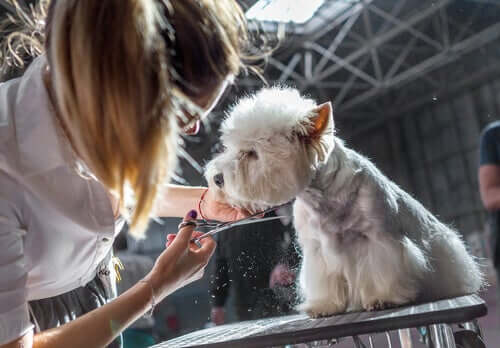Tips for Taking Your Dog to a Pet Expo


Written and verified by the lawyer Francisco María García
Taking your dog to a Pet Expo may sound great, but it requires a lot of dedication. Most of these events are dedicated to selecting and improving various dog breeds, and choosing the best specimens for this purpose. Therefore, they often need to meet certain requirements in order to participate in these large events.
Up next, we’ll share with you more about dog exhibitions and provide some advice to help you better prepare your best friend for the contests.
Some tips for taking your dog to a pet expo
Before signing your dog up for an exhibition, it’s critical to prepare and train it well so that it will meet all the requirements needed, and so it can succeed at the contest.
Here are some practical tips to make your planning easier:
Attend different kinds of exhibitions
We could tell you a lot about competitions and dog expos, but the best way to learn is to attend and watch closely. Attending these events will allow you to learn which elements the judges take into consideration. Moreover, you’ll also have the chance to interact with the most experienced competitors.
It’s important to visit the club tent, where they offer information on how to enroll and prepare your dog. Often, the clubs themselves also offer training classes for beginner dogs.
Ensuring your dog’s qualification
The American Kennel Club, for instance, only allows dogs with a pedigree that are older than six months and unneutered, to participate. This criterion derives from the purpose of the exhibition, which is to choose the most suitable specimen for breeding.

However, as there are different kinds of events with different purposes, many will accept only certain kinds of dogs. In addition, if your dog is of a beautiful mixed breed or a mutt, there are also exhibitions dedicated to this type of dog.
Acquire a suitable strap
Every dog at a pet expo must be on a suitable leash or strap the best. Your choice should be guided by your dog’s size.
If your dog is small, it would be ideal to acquire a collar with a Resco strap (or an all-in-one type of strap). For medium-sized or large but thin dogs, a dog harness should be used. However, for larger or really big dogs with well-developed muscles, people often use special exhibition chains.
It’s recommended to get your dog used to its new leash a few months before the competition. We must always remember that adaptation is a crucial process and our pet should feel comfortable playing its role optimally.
Attending ringcraft classes
Ringcraft classes are very useful for owners and beginner dogs to get familiar with the dynamics of exhibitions. They also tend to promote and further enhance the dog’s social abilities. Even though these classes aren’t a requirement for participating in events, they usually improve the animal’s training substantially.
Train your dog’s walking pace
Whether or not you opt for ringcraft classes, it’ll still take a lot of training before you can take your dog to an exhibition. The steady pace they walk at isn’t a coincidence and is the result of a lot of effort and dedication. The first step in preparing your furry friend for such an event is to practice the way they’ll walk.

In these kinds of events, jogging is the most appropriate rhythm because it allows you to show the dog’s physical structure and skills.
A well-trained dog should start jogging by simultaneously moving its right front leg and left hind leg. Next, it should continue jogging in a balanced manner while moving its left front leg and right rear leg.
Teach your dog how to stand on hind legs
This is another requirement to succeed if you take your dog to an exhibition. Standing on hind legs means your dog will have to stand and stay still. This allows judges to evaluate their physical qualities, appearance, and condition.
To start teaching your dog, you’ll need to manually place each of its legs in the proper position. In addition, in order for your dog to learn this on its own, it’s essential to use positive reinforcement, and acknowledge and stimulate its learning process.
If your dog appears to have no motivation or no longer has the same energy to perform its training, then consult the vet. It’s important to remember that the animal’s welfare must always be a priority.
This text is provided for informational purposes only and does not replace consultation with a professional. If in doubt, consult your specialist.